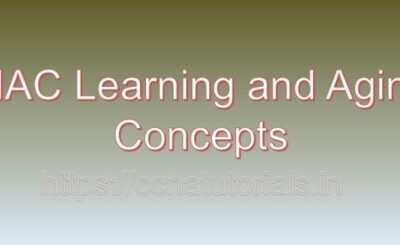Contents of this article
In this article I describe the Wide Area Network WAN topology for ccna. I can give you an overview of Wide Area Network WAN topology for ccna, along with examples.
Wide Area Network WAN topology architectures refer to the layout or arrangement of network components across geographically dispersed locations to facilitate communication and data exchange over long distances. WAN topologies vary based on factors such as network requirements, geographic spread, and available resources. Let’s explore some common WAN topology architectures and their characteristics:
Point-to-Point (P2P) Topology:
In a point-to-point topology, two endpoints are directly connected over a dedicated communication link. This topology is simple and straightforward, making it suitable for connecting two remote locations or establishing a direct link between network devices. The primary characteristics of a point-to-point topology include:
Dedicated Communication Link:
Each point-to-point connection is established over a dedicated communication link, such as leased lines, T1/E1 lines, or microwave links. The dedicated link provides a direct and exclusive connection between the two endpoints, ensuring reliable and secure communication.
Simple Configuration:
Point-to-point connections require minimal configuration and management, making them easy to deploy and maintain. Each endpoint only needs to be configured to establish a connection with the remote endpoint, eliminating the complexity of intermediate network devices or routing protocols.
Low Latency:
Point-to-point connections typically have low latency and predictable performance since there are no intermediate network devices or hops between the endpoints. This makes point-to-point links suitable for applications requiring real-time communication or low-latency data transfer.
Example:
A point-to-point topology is commonly used to connect branch offices to a central headquarters or to establish a dedicated link between two data centers for replication and backup purposes.
Hub-and-Spoke Topology:
In a hub-and-spoke topology, a central hub location serves as the focal point for connecting multiple remote locations, known as spokes. All communication between remote locations is routed through the central hub, which acts as a traffic aggregation point. The primary characteristics of a hub-and-spoke topology include:
Centralized Management:
The central hub location facilitates centralized management and control of network traffic, policies, and resources. Network administrators can configure and monitor network connectivity, apply security policies, and optimize traffic routing from a single location.
Traffic Aggregation:
All communication between remote locations is aggregated and routed through the central hub, reducing the complexity of network configuration and management. This simplifies traffic routing, enhances network visibility, and improves bandwidth utilization across the WAN.
Scalability:
Hub-and-spoke topologies are scalable, allowing additional remote locations (spokes) to be easily added to the network as needed. New spokes can be connected to the central hub location using point-to-point or VPN connections, enabling flexible expansion and growth of the network.
Example:
A hub-and-spoke topology is commonly used in enterprise networks to connect branch offices, retail stores, or remote sites to a central headquarters or data center. The central headquarters serves as the hub, while branch offices or remote sites act as spokes connected to the hub location.
Full Mesh Topology:
In a full mesh topology, every network node or location is directly connected to every other node or location, forming a fully interconnected network. This topology provides redundant communication paths and high fault tolerance but requires a significant number of connections and resources. The primary characteristics of a full mesh topology include:
Redundant Communication Paths:
Full mesh topologies provide redundant communication paths between network nodes, ensuring high availability and fault tolerance. If one communication link or node fails, alternative paths can be used to maintain connectivity between nodes.
High Resilience:
Full mesh topologies are highly resilient to network failures and disruptions since multiple paths are available for data transmission. This makes full mesh topologies suitable for mission-critical applications or environments requiring continuous connectivity.
Complexity and Scalability:
Full mesh topologies can be complex to design, deploy, and manage, especially as the number of network nodes increases. The number of connections and resources required grows exponentially with the number of nodes, making full mesh topologies less scalable for large-scale deployments.
Example:
A full mesh topology is commonly used in private WANs or backbone networks to interconnect multiple data centers, cloud regions, or high-traffic locations. This ensures redundant communication paths and high availability for critical applications and services.
Conclusion for Wide Area Network WAN topology for ccna:
WAN topology architectures play a crucial role in designing and implementing wide area networks that meet the connectivity and communication needs of geographically dispersed locations. Point-to-point, hub-and-spoke, and full mesh topologies are common architectures used in WAN deployments, each offering unique characteristics and benefits depending on the network requirements and constraints.
Understanding the characteristics of different WAN topology architectures is essential for selecting the most suitable topology for a given network environment and ensuring efficient and reliable connectivity across the WAN. I hope you found this article helpful related to Wide Area Network WAN topology for ccna. You may drop a comment below or contact us for any query or suggestions related to the contents of this website.






